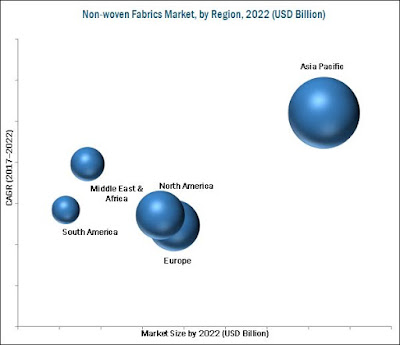Market Overview
Non Woven Fabric is
material manufactured from short and long fibers bonded together by chemical,
mechanical, heat or solvent materials. These fabrics are broadly defined as
sheets or web structures that are bonded together either mechanically,
chemically or thermally. These engineered fabrics can be disposable that is
meant for single use or durable also. Various functions which these fibers
performed or accord to the main fabric are absorbency, stretch, tensile
strength, durability, acoustic insulation, filtration, softness, bacteria
prevention etc. Their structure varies
from crisp, harsh, hard to tear, soft to touch to extremely weak depending upon
the particular application they are put to use.
This nonwoven fabric is highly used in many industries like Filtration Industry, Automotive Industry, Home Textiles, Packaging Industry and many more to count. Their respective share in different sectors can be clearly judge from the various purposes they are being put into use.
As per the report of the
Non Woven Fabric Market Research the market size for nonwovens globally is
estimated to grow from USD 22.62 Billion in 2016 to USD 34.85 Billion by 2022.
This market size is projected from 2017 to 2022. This project is based on the
analysis of Key Regions that is Asia-Pacific, Europe, North America, The Middle
East, Africa and Latin America. Among all Asia-Pacific is considered to be the
largest and fastest growing market during this period followed by North America
and Europe respectively. The reason for such high growth of this industry being
the rising awareness for hygiene and personal care. It has mandate the
manufacturers to use these fibers as they are highly bacteria resistant and
provide the required features to the main product making it highly suitable and
feasible for use.
On the basis of given
market report, it can be well assessed that nonwoven fabric market is expected
to witness a considerable growth in the coming years owing to the growth of
modern health care in developing countries and rising awareness of
environmental friendly fabrics. As at Jhanji Textiles also we manufacture these
fibers from PET flakes which are derived from 100% recycled PET bottles. These
Polyester based fabrics are also very cheap alternative to fabric and have high
tensile strength and durability.


Comments
Post a Comment